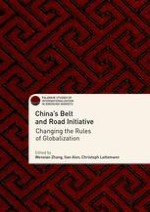2018 | OriginalPaper | Buchkapitel
11. The Overall Development of the Belt and Road Countries: Measurement, Ranking, and Assessment
verfasst von : Biliang Hu, Qingzhong Pan, Shuyu Wu
Erschienen in: China's Belt and Road Initiative
Aktivieren Sie unsere intelligente Suche, um passende Fachinhalte oder Patente zu finden.
Wählen Sie Textabschnitte aus um mit Künstlicher Intelligenz passenden Patente zu finden. powered by
Markieren Sie Textabschnitte, um KI-gestützt weitere passende Inhalte zu finden. powered by
